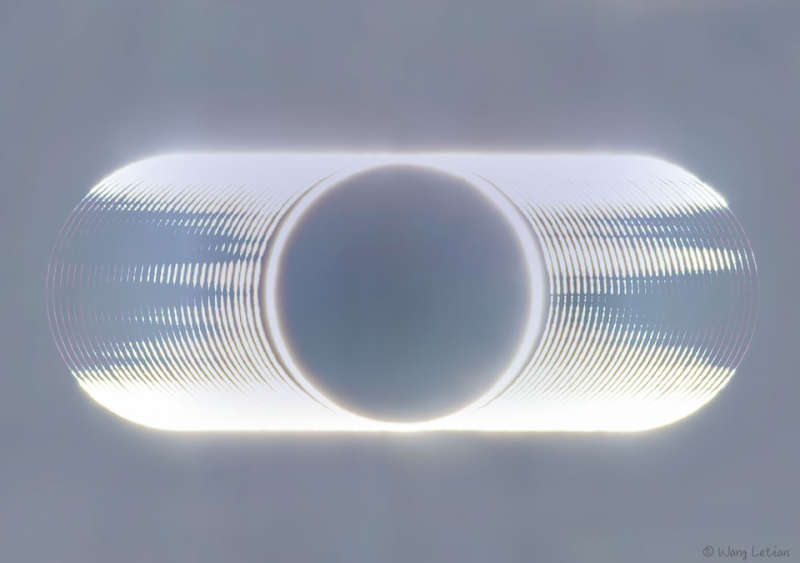APOD: 2023 September 17 B Moon Mountains Magnified during Ring of Fire Eclipse

| << Yesterday | 17.09.2023 | Tomorrow >> |

Credit & Copyright: Wang Letian
(Eyes at Night)
Explanation:
What are those dark streaks in this composite image of a solar eclipse?
They are reversed shadows of mountains at the edge of the Moon.
The center image, captured from
Xiamen,
China,
has the Moon's center directly in front of the Sun's center.
The Moon, though, was
too far from
the Earth to completely
block the entire Sun.
Light that streamed around the edges of the Moon is called a
ring of fire.
Images at each end of the sequence show
sunlight that streamed through lunar valleys.
As the Moon moved further in front of the Sun, left to right,
only the higher peaks on the Moon's perimeter could block sunlight.
Therefore, the dark streaks are projected,
distorted, reversed, and magnified
shadows of mountains at the Moon's edge.
Bright areas are called
Baily's Beads.
Only people in a narrow swath across Earth's
Eastern Hemisphere
were able to view this full annular solar eclipse in 2020.
Next month, though, a narrow swath crossing
both North and South America
will be exposed to the
next
annular solar eclipse.
And next April, a
total solar eclipse will be visible across
North America.
Open Science:
Browse 3,000+ codes in the Astrophysics Source Code Library
1999 2000 2001 2002 2003 2004 2005 2006 2007 2008 2009 2010 2011 2012 2013 2014 2015 2016 2017 2018 2019 2020 2021 2022 2023 2024 2025 |
Yanvar' Fevral' Mart Aprel' Mai Iyun' Iyul' Avgust Sentyabr' Oktyabr' Noyabr' Dekabr' |
NASA Web Site Statements, Warnings, and Disclaimers
NASA Official: Jay Norris. Specific rights apply.
A service of: LHEA at NASA / GSFC
& Michigan Tech. U.
|
Publikacii s klyuchevymi slovami:
Moon - annular solar eclipse - Luna - kol'ceobraznoe solnechnoe zatmenie
Publikacii so slovami: Moon - annular solar eclipse - Luna - kol'ceobraznoe solnechnoe zatmenie | |
Sm. takzhe:
Vse publikacii na tu zhe temu >> | |